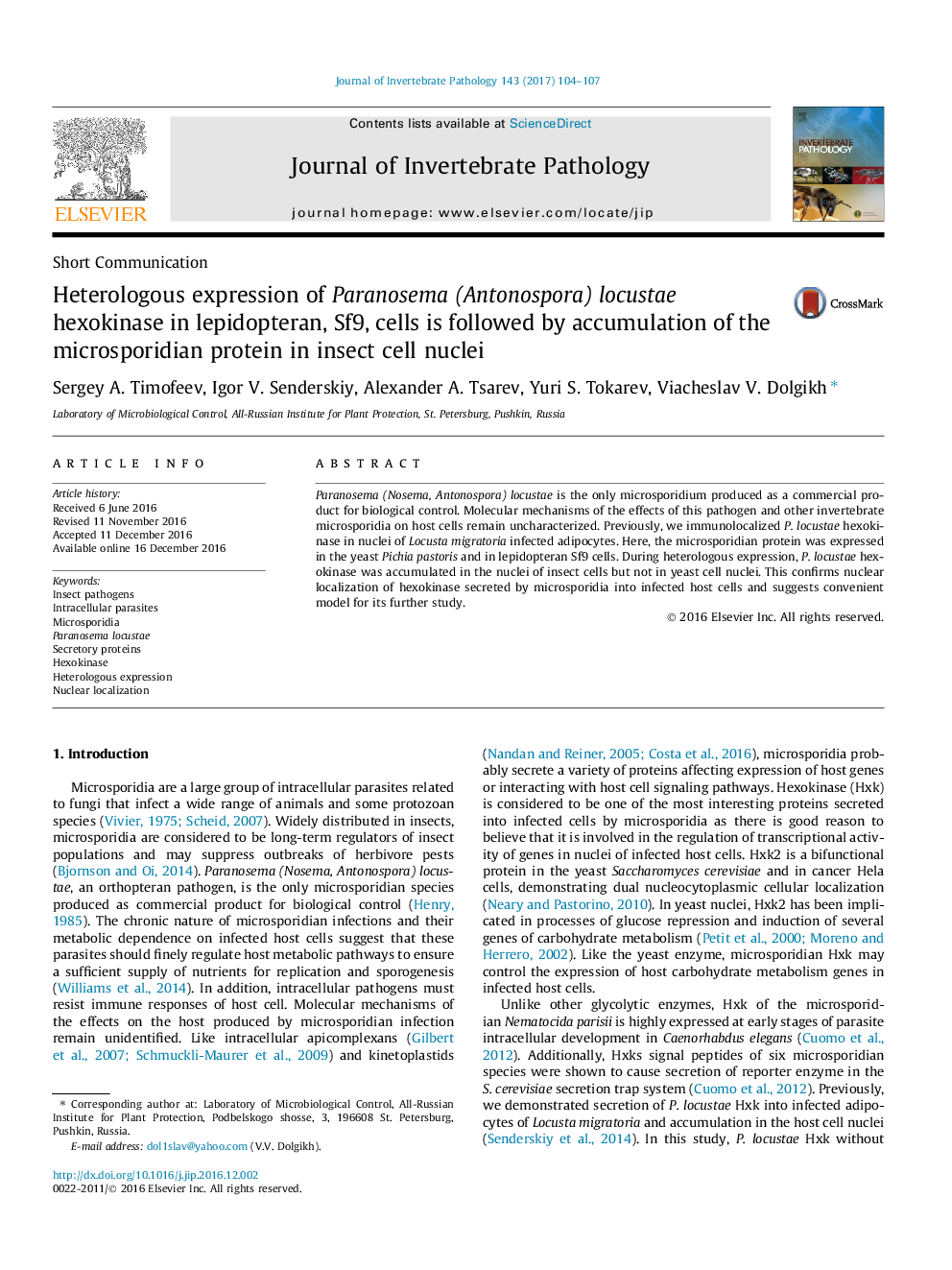| Article ID | Journal | Published Year | Pages | File Type |
|---|---|---|---|---|
| 5767014 | Journal of Invertebrate Pathology | 2017 | 4 Pages |
â¢Hexokinase secreted by microsporidia into host cells is accumulated in the nuclei.â¢Paranosema locustae hexokinase shows similar behavior in the host and Sf9 cells.â¢Sf9 cell line is a suitable model to study proteins secreted by insect microsporidia.
Paranosema (Nosema, Antonospora) locustae is the only microsporidium produced as a commercial product for biological control. Molecular mechanisms of the effects of this pathogen and other invertebrate microsporidia on host cells remain uncharacterized. Previously, we immunolocalized P. locustae hexokinase in nuclei of Locusta migratoria infected adipocytes. Here, the microsporidian protein was expressed in the yeast Pichia pastoris and in lepidopteran Sf9 cells. During heterologous expression, P. locustae hexokinase was accumulated in the nuclei of insect cells but not in yeast cell nuclei. This confirms nuclear localization of hexokinase secreted by microsporidia into infected host cells and suggests convenient model for its further study.
Graphical abstractDownload high-res image (145KB)Download full-size image
